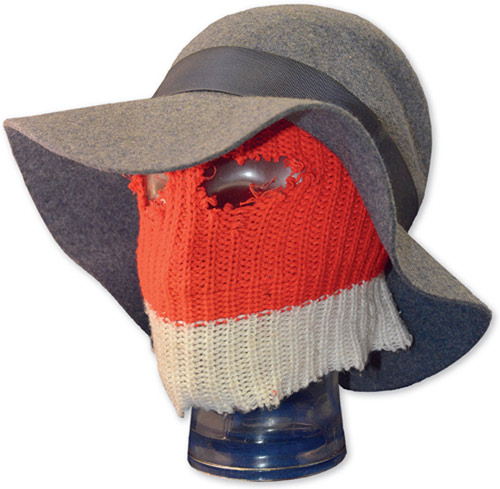
THE MAUSER PISTOLS used by the criminals were a big factor in how the Sidney Street siege developed.
This famous incident originated from the murder of three City of London police officers on 16 December 1910 when they disturbed a gang of Latvian immigrants breaking into a jeweller’s shop in Houndsditch. Sergeants Charles Tucker and Robert Bentley, and PC Walter Choat were killed by the burglars’ gunfire, and two of their colleagues were seriously injured. The incident was one of the most serious in British history for loss of life of officers by criminals. The gang escaped, but one of them, George Gardstein, died from gunshot wounds accidentally inflicted by one of his own side. A manhunt then ensued for the gang, including one known as ‘Peter the Painter’.
On 2 January 1911 the Metropolitan Police responded to information that two of the gang were hiding at No. 100 Sidney Street. Overnight, the police quietly cordoned off the area and evacuated residents from neighbouring buildings. The owner of the second-floor flat was a Mrs Betty Gershon. The gunmen took her skirt and shoes to prevent her from leaving the building, but she was allowed to go to the ground floor and it was from there that she was rescued by the police. At dawn on 3 January, Detective Inspector Frederick Wensley, who was in charge of Whitechapel’s CID, knocked on the door, but received no reply. He then threw pebbles at the window to try to start communications with the two men inside, but was met with a hail of gunfire. Wensley’s assistant, Sergeant Ben Leeson, was wounded, and Wensley, himself unarmed, arranged for Leeson’s evacuation across rooftops, but was pinned down behind a chimney stack by gunfire from the men, who were identified as Fritz Svaars and a man known only as ‘Josef’. The Mauser pistols used by the men were capable of rapid, accurate fire up to 1,000m, and were far better than the police’s mixture of bulldog revolvers, shotguns and .22 weapons normally used on the rifle ranges.
The commissioner, Sir Edward Henry, was not in London, so Deputy Commissioner Major Frederick Wodehouse took charge and asked for military reinforcements to provide better firepower. This request went through the Home Secretary, Winston Churchill, who attended the scene himself just before 12 p.m. He was probably the only Home Secretary to have taken personal charge at an operational incident and arguably should have taken a more detached role, but Churchill was forthright and did not shrink from leadership situations. It is also possible that a government minister should have been on hand when both military and police forces were being deployed. In modern times, the government would set up the Cabinet Office Briefing Room (COBRA) to co-ordinate the response of different government departments.
At 10.45 a.m., twenty-one marksmen from the Scots Guards had arrived the short distance from the Tower of London. They took up positions and started to return effective fire against the gunmen. This drove the gunmen from the second floor to the ground floor. About 500 officers were needed to keep back the large crowds that had gathered. Winston Churchill decided that heavier firepower was required and called for a Maxim gun, but before this arrived, the house caught fire – possibly due to gunfire, but also perhaps started by the gunmen as a diversion. One of the men, probably Josef, put his head out of the window and immediately fell back, apparently shot by the soldiers. The shooting from the house then slowed and the fire took a firmer hold; Churchill ordered the fire service not to risk their lives trying to extinguish it. The last shots from the house were heard shortly after 2 p.m. The roof of the house collapsed and it was clear that nobody could be alive inside. The fire was then extinguished, but a senior fire officer, Charles Pearson, was killed by a falling wall as he inspected the damage inside the house. Two bodies were found, one of whom had been killed by gunfire, the other by the effects of smoke.
This large-scale armed siege suddenly became an unexpected crisis for the police to resolve, and a challenge for detailed investigation to support a prosecution.
The police eventually caught the surviving members of the gang responsible for the Houndsditch jeweller’s shop burglary. They had a mixture of extreme left-wing political views, but were united in their belief in theft of property and using violence. The prosecutions were complicated by language difficulties and piecing together the criminals’ chaotic lifestyles, so only one conviction was achieved, itself overturned on appeal.
The incident led to a review of the firearms available to the police and better training for the officers using them. On the block of flats now standing on the site is a small red plaque that records the loss of life of Charles Pearson, whose death is often forgotten in relation to the incident.
The Mauser pistol was an exhibit in the Sidney Street case and was presented to the Crime Museum in 1987 by an Assistant Chief Constable of Sussex, following the death of a Lewes magistrate who left instructions that it should be returned to the police after his death.

1975
Improvised balaclava and hat used at Spaghetti House siege